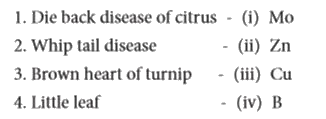Define the term inflorescence. Explain the basis for the different types of inflorescence in flowering plants. Solution in Tamil
Step by step video & image solution for Define the term inflorescence. Explain the basis for the different types of inflorescence in flowering plants. by Biology experts to help you in doubts & scoring excellent marks in Class 11 exams.
Updated on:21/07/2023Topper's Solved these Questions
Similar Questions
Identify correct match.

View SolutionCompare the following :
(a) Central nerual system (CNS) and Peripheral neural system (PNS).
(b) Resting potential and actions potential .
(c ) Choroid and retina.
View SolutionDefine the term inflorescence. Explain the basis for the different types of inflorescence in flowering plants.
View Solutionपुष्पक्रम की परिभाषा लिखों। पुष्पी पादपों में विभिन्न प्रकार के पुष्पक्रमों के आधार का वर्णन कारों।
View SolutionDefine the term inflorescence. Explain the basis for the different types of inflorescence in flowering plants.
View Solutionपुष्पक्रम की परिभाषा लिखिए। पुष्पी पादपों में विभिन्न प्रकार के पुष्पक्रमों का वर्णन करो।
View SolutionDefine the term inflorescence. Explain the basis for the different types inflorescence in flowering plants.
View Solutionपुष्पक्रम का क्या अर्थ है ? विभिन्न प्रकार के असीमाक्ष पुष्पक्रमों को समझाइए।
View Solutionपुष्पक्रम की परिभाषा करो। पुष्पी पादपों की विभिन्न प्रकार के पुष्पक्रमों के आधार का वर्णन करों।
View SolutionDefine the term inflorescence. Explain the basis for the different types of inflorescence in flowering plants.
View SolutionDefine the term inflorescence. Explain the basis for the different types of inflorescence in flowering plants.
View SolutionDefine the term inflorescence. Explain the basis for the different types of inflorescence in flowering plants.
View SolutionDefine the term inflorescence. Explain the basis for the different types
View Solutioninflorescence in flowering plants.
View SolutionDefine the term inflorescence. Explain the basis for the different types of inflorescence in flowering plants.
View Solution
